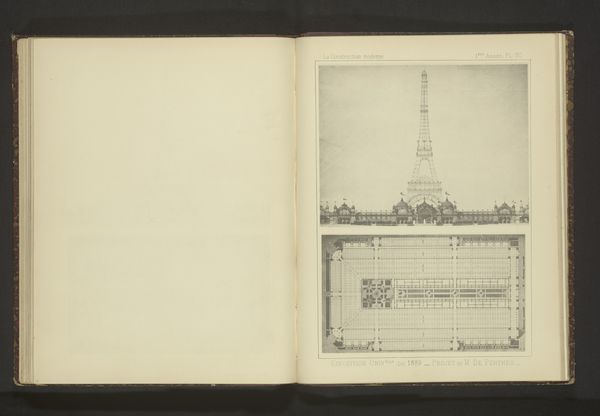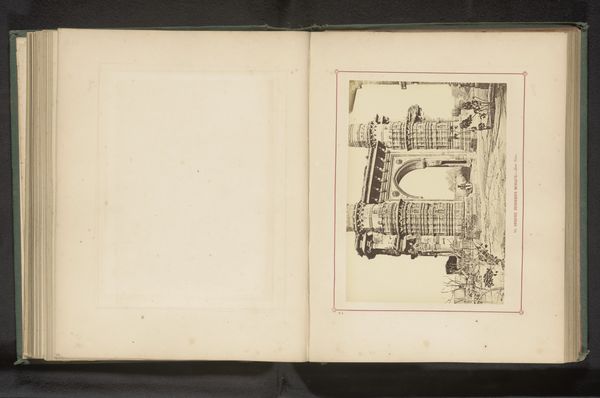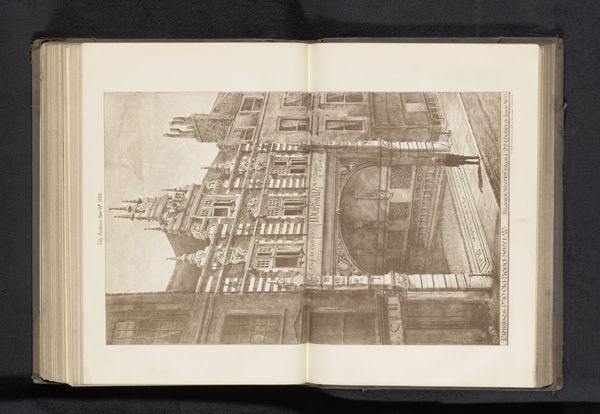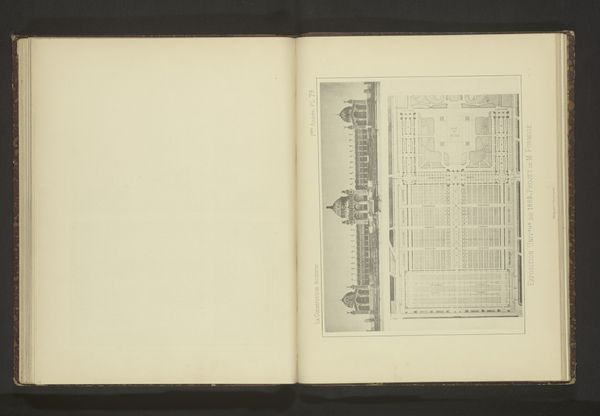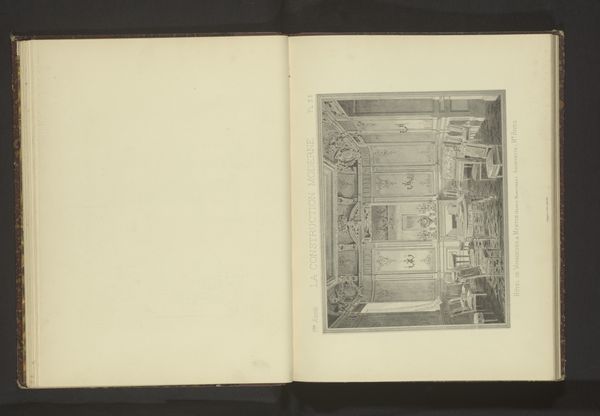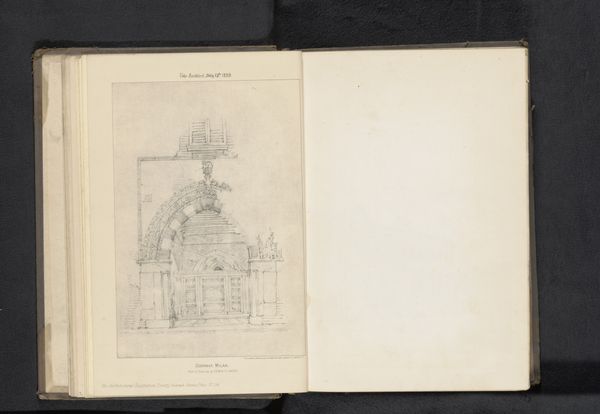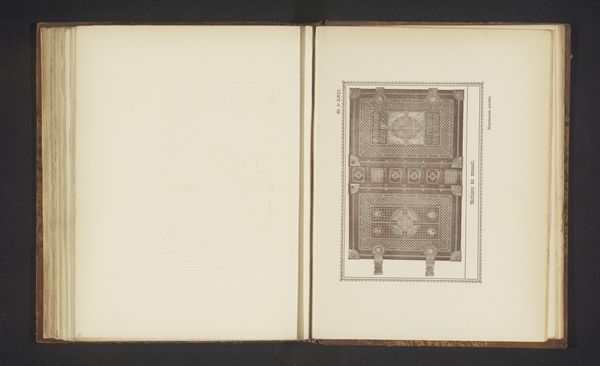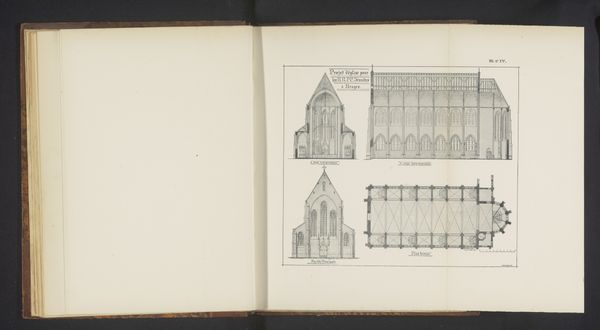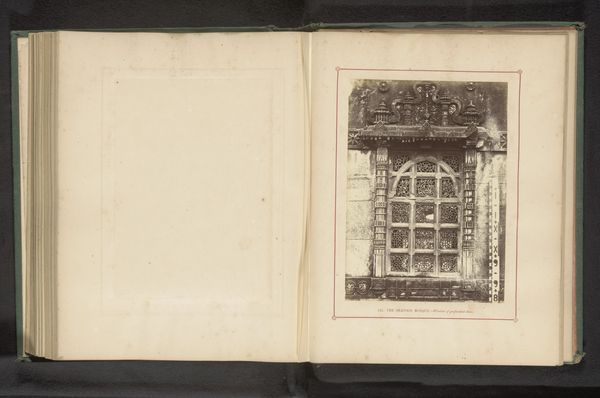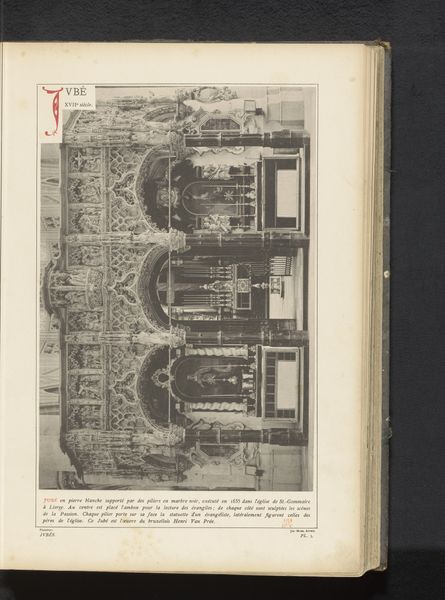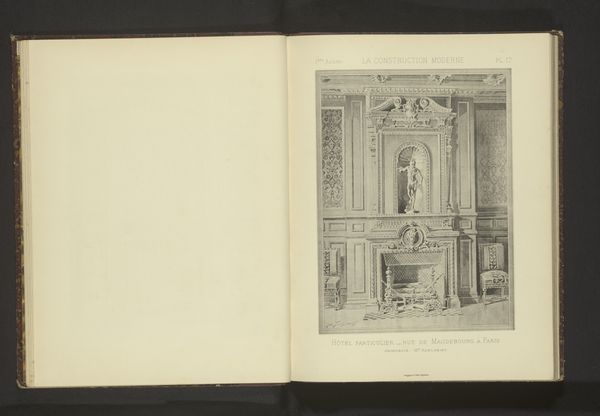
Twee reproducties van ontwerpen voor de Wereldtentoonstelling van Parijs in 1889 door Ferdinand Dutert before 1886
0:00
0:00
drawing, print, architecture
#
drawing
# print
#
geometric
#
cityscape
#
architecture
Dimensions: height 278 mm, width 208 mm
Copyright: Rijks Museum: Open Domain
Curator: This print showcases two reproductions of designs by Ferdinand Dutert for the 1889 World's Fair in Paris. They are labeled 'Exposition Universelle de 1889, Project de M. Dutert.' Editor: Well, the Eiffel Tower instantly captures your attention, even in this early conceptual stage. It’s stark and skeletal, a testament to modern engineering's ambitious spirit, and these elaborate plans suggest how integrated the tower was to be. Curator: Absolutely. What’s fascinating is how the geometric cityscapes in these designs speak to a broader reimagining of urban space during this era, where functional structures celebrated civic pride. Notice the interplay between open, planned garden spaces and structured edifices. Editor: The tower becomes a monumental symbol of progress, but placed amidst classical garden layouts. It feels like Dutert is consciously negotiating old and new urban ideals. The Eiffel Tower itself soon became a visual shorthand for the city, representing France in new ways as the turn of the century approached. Curator: It’s striking to me how these images embody collective memory and the aspirations of the late 19th century. The tower represents not just engineering prowess, but also France’s renewed position as a cultural and industrial leader on the world stage. You can see how its form rapidly integrated with symbolic meaning. Editor: And these architectural plans are also socio-political statements, right? By situating this marvel of engineering in this carefully orchestrated space, Dutert emphasizes control and the shaping of the citizen experience through designed environments. He makes this new Paris literally rise out of old forms. Curator: The juxtaposition between modern design and classical gardens shows us that even in embracing radical innovation, cultural memory remains tethered to certain symbolic orders. How else to reconcile the tower's break from convention, but with a garden celebrating order and symmetry? Editor: Precisely. The planned park spaces invite the masses, subtly guiding the narrative about what progress should feel like and mean to Parisians at that time. The way this project reshaped not only the urban layout but the politics of space remains relevant today. Curator: Considering the symbolic language imbued in this project, it seems architecture at this scale always inherently involves constructing national identity alongside city infrastructure. Editor: It reminds us that even now, the public role of art isn't always to critique, but at times to express unity.
Comments
No comments
Be the first to comment and join the conversation on the ultimate creative platform.
